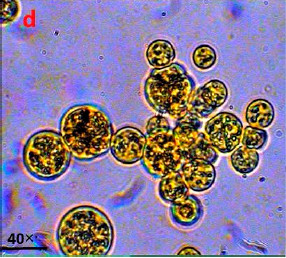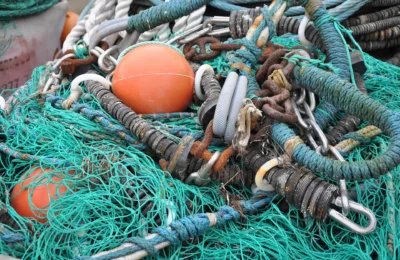Article: D.W. Hastings, P.T. Schwing, G.R. Brooks, R.A. Larson, J.L. Morford, T. Roeder, K.A. Quinn, T. Bartlett, I.C. Romero, D.J. Hollander. 2014. Changes in sediment redox conditions following the BP DWH blowout event. Deep-sea Research Part II. DOI:http://dx.doi.org/10.1016/j.dsr2.2014.12.009
The 2010 Deepwater Horizon oil spill (DWH) in the Gulf of Mexico is a notable event for many reasons: it’s the largest accidental release of petroleum and gas into United States’ marine environment (over 600 million liters of oil), the deepest of any accidental spill (over 1500 meters deep), and it had the greatest amount of chemical oil dispersants used to mitigate it (over 6.8 million liters). Nearly half a decade later, scientists are still studying the impacts of the oil spill. Much of the work is going into determining the long term effect the spill had on the Gulf of Mexico and whether or not the environment will be able to return to its pre-spill condition.
A rather mysterious event associated with the DWH incident is the large amount of oil-contaminated marine snow (learn more about marine snow here) which formed during and immediately after the spill. There are many different hypotheses for how this oily deposit was formed – including oil aggregations on dead and sinking phytoplankton as well as increased sedimentation from the nearby Mississippi River, but no one knows for sure what caused this sedimentation event. What scientists are beginning to understand though, is how this oil rich marine snow impacted the different habitats of the Gulf of Mexico – particularly the redox conditions.
Redox is the commonly used shorthand to described coupled oxidation and reduction reactions. Many chemical reactions of living organisms (like photosynthesis, respiration, etc.) are redox reactions and are greatly influenced by the surrounding environment. For example, an oxygen rich environment is described as an oxidizing environment (go figure…) and this environment would favor oxidation reactions like respiration, allowing organisms to easily gain energy from oxidation reactions. On the flipside, environments with little oxygen are reducing and favoring reduction reactions. Thus, the presence of oxygen is a really important factor driving the type of sediment chemistry that occurs. The depth where oxygenated sediments transition to anoxic sediments (called the redoxcline by geochemists) is an important feature that tells scientists a lot of about the chemical environment of the sediment. Recently accepted work by Hastings and colleagues have shown how this pulse of sediments to the bottom of the Gulf of Mexico has altered the redox chemistry of the sediments.
How did they do it?
Hastings et al.’s hypothesis was that this large sedimentation event greatly increased oxygen consumption in the sediment. They tested this hypothesis by looking for different metal ions throughout the sediment column to track changes in the sediment chemistry. They used sediment cores taken from various locations in the Gulf of Mexico (Fig. 1) between 2010-2013 and measured the concentrations of different redox sensitive metals. They used cores taken from the general area before the DWH spill to use as baseline for pre-spill conditions.

Hastings et al. measured concentrations of manganese (Mn) and rhenium (Re) at different depths in the sediment using inductively coupled mass spectrometry (which is a scary way of saying they ionized an separated the metals by size for identification and quantification – if you’re interested, you can learn more here). All three elements are sensitive to changes in oxygen concentrations and are useful as proxies for redox conditions. For instance, Mn ions in seawater – where oxygen is plentiful – readily form manganese oxides, which are solid and deposit into the sediment. When oxygen becomes depleted (the environment becomes reducing), manganese reduces to a more soluble ion (Mn2+) which diffuses upward where it can encounter oxygen again and return to its solid oxide form. Thus, the depth where there is a maximum in Mn2+ ions can tell scientists a lot about the redox conditions of the sediment. Re behaves very similarly, where sediments that are reducing (lacking oxygen) tend to be enriched in Re. Thus, Re is also a useful tracer of redox conditions in sediments.
Furthermore, Hastings and colleagues studied the density of single celled organisms called foraminifera found in each of the sediment cores. They were able to separate the different species of foraminifera and used them as a description of the animal community found in the sediment before and after the DWH spill.
What did they find?
In sediment cores taken before the DWH spill, the researchers found a single Mn peak ranging from 77 to 165 mm deep which is a fairly typical pattern in shelf sediments like those in the Gulf of Mexico. In these pre-spill cores, they also found a Re increase below the Mn peak, which is again, typical and expected (Fig 2).

In sediment cores taken immediately after the DWH spill, Hastings and colleagues observed a change in the position of the redoxcline, including the depth of the Mn and Re peaks – all of which moved up closer to the surface (Fig 3). This supports their hypothesis that the sedimentation event changed redox conditions of the underlying sediment by increasing oxygen consumption. With this large addition of organic matter to the sediment surface, respiration increased greatly, depleting oxygen faster, resulting in an oxic-anoxic transition zone that is much shallower than before. The Mn and Re peak depths were also shallower. An additional feature that was observed was a secondary peak of Mn was observed below the Re peak, which is likely a remnant of the Mn peak from pre-spill conditions.

Sediment cores taken months and years after the DWH spill have shown a slow return of redox conditions. The redoxcline is moving back down in the sediment column though the last core (taken in 2013) still shows a substantial difference between the pre-spill cores and 3 year post-spill cores (Fig 4). Hastings and colleagues also found that the foraminiferan community changed in conjunction with the change in redox conditions and have not yet returned to a pre-spill community composition.

What’s so important about this research?
Hastings et al.’s work is important in that it outlines one of the possible long term impacts of this large environmental disaster. While it’s fairly obvious how an oil spill can be detrimental to marine ecosystems, this research illustrates how an accident of this magnitude can indirectly influence underlying ecosystems. Changes in redox conditions (i.e. changes in oxygen content and depth of oxygen penetration) are important determinants of chemical processes that occur in the sediments and can greatly impact the benthic communities that live in those sediments.
Furthermore, this research showed that some impacts of the DWH spill can be long lasting. It has been nearly five years since the Macondo wellhead first exploded and even now, sediment conditions have not returned to pre-spill conditions. While the spill lasted for months, in the grand scheme of things, the DWH spill represents a transient event and redox conditions are expected to (eventually) return to their steady state (pre-spill) conditions. However, it is not clear whether other aspects, such as the benthic community, will naturally restore to pre-spill conditions. Much more research is needed to see just how the biology of the Gulf of Mexico is influenced in the long run but this research provides a critical step in the process.
A recent convert to oceanography, I’m studying under Dr. Anne McElroy at Stony Brook University’s School of Marine and Atmospheric Sciences. My research uses biochemical and genomic methods to investigate how coastal organisms respond to environmental stress.


